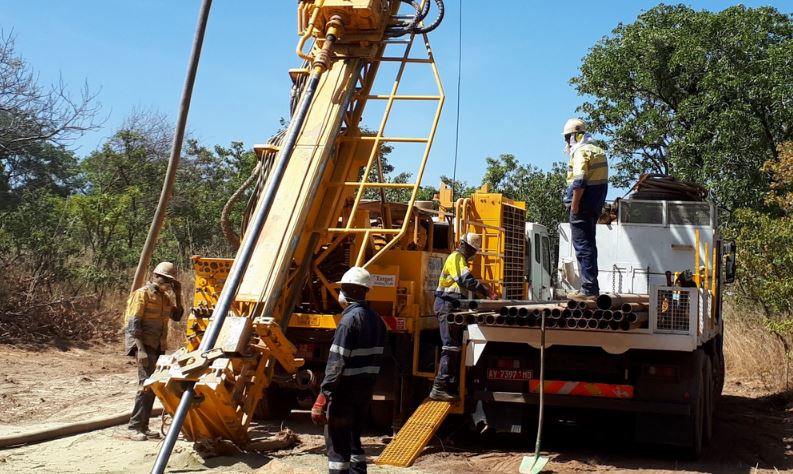Compass Gold shares up 72% on Mali drill results

Compass Gold Corp. [CVB-TSXV; COGDD-OTC] shares rallied sharply Thursday September 5, buoyed by drilling results from the company’s Sikasso property in southern Mali, West Africa.
Results released on Thursday are from a recently completed diamond core drilling program at the Farabakoura artisanal workings in an area of Sikasso known as the Ouassada permit.
The company said diamond drilling at Farabakoura intercepted high-grade gold mineralization in bedrock, including 6.1 metres of 65.6 g/t gold from 19.5 metres and 13 metres of 9.25 g/t gold from 21.1 metres.
“All seven diamond drill holes (total 995 metres) intersected significant gold mineralization within a 200-metre section of the 750-metre long Farabakoura high-grade zone,” the company said. “Follow-up drilling in the fourth quarter will test open areas and extent of the gold rich zone,” it said.
Compass shares advanced on the news, rising 72% or 18 cents to 43 cents on heavy volume of 2.73 million. The shares are currently trading in a 52-week range of 10.5 cents and 71 cents.
The Sikasso property consists of nine prospecting permits covering an area of approximately 850 km2 and is located in the Sikasso Region of the Republic of Mali. The property is divided into three permit blocks, including Yanfolilia North, Yanfolilia South and Kale.
The Yanfolila North block consists of the adjoining Farabacoura and Ouassada permits, and the non-contiguous Sankarani permit, and covers an area of 254 km2.
All permits are owned by Compass’s subsidiary Mali Gold Exploration Pty Ltd. (MGE).
The properties in the Sikasso Project are considered prospective for orogenic gold-style mineralization, based on their favourable Paleoproterozoic geology and structure, including their proximity to other mineralized systems in the area.
The Ouassada, Sankarani and Kouru permits contain several historic surface showings and artisanal alluvial and eluvial (wind-deposited) mines. Modern exploration, using a variety of techniques such as soil geochemistry, lithogeochemical prospecting and airborne geophysics resulted in the identification of additional mineralization, which has subsequently been worked by artisanal miners at several localities.
Bedrock mineralization has previously been identified on the Ouassada and Sankarani permits, and consists of decimetre wide quartz veins with pyrite. The average gold concentration of 342 artisanal pit samples collected from two prospects at Ouassada (Farabakoura and Kabangue) was 3.11 g/t gold, with a large standard deviation of 6.99 g/t gold, which reflects the “nuggety” nature of the gold.
Independent sampling of bedrock and eluvial mineralization on the property confirmed the previous measured gold concentrations.
“The conclusion of this season’s drilling at Farabakoura has returned some spectacular high-grade gold intercepts over an extensive area, as well as valuable new structural and regional data that continues to excite our team,” said Compass CEO Larry Phillips.
“In addition to finding such strong gold values, this work has revealed new structures with significant potential that we will begin drilling in Q4 once the rainy season ends,” he said.
Drill results reported on Thursday supplement reverse circulation drilling carried out at the Creek Zone at Farabakoura during April and June, 2019. The purpose of the latest seven-hole diamond drilling program was to test the down-dip continuity of an extensive mineralized zone (450 metres long) and provide critical information on the nature of the gold-bearing veins.
The Creek Zone is part of a semi-continuous zone of gold mineralization that is present over a distance of 760 metres, and displays apparent widths up to 60 metres (grading 1.42 g/t gold), and sporadic high-grade samples.
